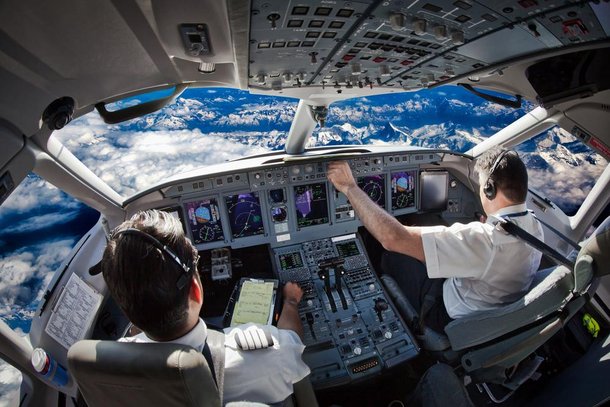Em 2019, antes de o mundo ser atingido pela pandemia, mais de 110 mil aviões sobrevoaram os céus do planeta diariamente. Ao final daquele ano, 42 milhões de voos comerciais transportaram 4,5 bilhões de ageiros.
Estamos acostumados a poder chegar a qualquer lugar do mundo com rapidez e conforto em um aviçao. No entanto, sabia que há lugares onde esses gigantescos pássaros de ferro quase não voam? Um deles é o Oceano Pacífico.
A menos que você possua alguma familiaridade com a aviação comercial, provavelmente está se perguntando o motivo pelo qual as companhias aéreas evitam voar diretamente sobre o Pacífico. Afinal, a crendice popular pode nos levar a crer que uma rota direta sobre esse oceano seria o caminho mais curto.
Mas as coisas não são bem assim e há várias razões para os aviões fugirem do Oceano Pacífico.
Segurança

O principal motivo para aviões não transportarem ageiros sobre o Oceano Pacífico envolve o fator segurança. Vale lembrar que as distâncias entre as ilhas desse oceano são enormes.
Caso algum problema aconteça, a tripulação terá que tentar um pouso forçado na água. Obviamente, isso representa um risco adicional que diminui ainda mais as chances de sobrevivência de todos.
Além disso, dadas as dimensões do Pacífico, mesmo que o piloto conseguisse manter a aeronave no ar com o motor problemático, seria praticamente impossível encontrar local para um pouso de emergência.
Curvatura da Terra

Outra grande razão para evitar voos no Oceano Pacífico é que as rotas curvas são mais curtas do que as retas. Isso pode até parecer contra-intuitivo, mas faz todo sentido se você lembrar que a Terra é esférica. Sendo assim, uma linha reta não representa necessariamente a menor distância entre dois pontos.
Aliás, muito dessa confusão se deve aos mapas planos: se uma pessoa fizer uma medição entre dois pontos neles e, depois, medir o mesmo trajeto em um globo, perceberá que as distâncias são diferentes.
Sendo assim, se um avião sair dos EUA para a Ásia, o voo mais rápido e com economia de combustível envolverá uma rota curva ando sobre massas de terra, e não uma linha reta sobre o Pacífico. Uma companhia aérea existe para ganhar dinheiro. Logo, o caminho mais barato e rápido é fundamental para a saúde dos negócios.
Onde é proibido voar?

Claro, o Oceano Pacífico não fica abandonado por completo. Nele existem várias nações insulares e a comunicação com o continente é algo fundamental para a sobrevivência delas, por isso, apesar dos riscos potenciais, há voos sobre essa região do planeta.
Algumas rotas dedicadas, por exemplo, são aquelas para áreas como Nauru, Nova Caledônia, Vanuatu, Fiji, Japão, Havaí, Ilhas Salomão e Nova Zelândia.
Mas há lugares na Terra onde os aviões comerciais estão proibidos de sobrevoar. Um deles é o Himalaia. A altura média desse sistema de montanhas é de 6 km acima do nível do mar. Quando um avião a pelo processo de despressurização, os pilotos precisam descer a aeronave até 3 km para que os ageiros consigam respirar por conta própria.
Essa manobra de sobrevivência deve levar, no máximo, 20 minutos, pois esse é o tempo previsto para o suprimento de oxigênio das máscaras se esgotar. Agora, tentar descer a uma altura de 3 km acima do nível do mar no Himalaia seria suicídio. Fora isso, como é uma região quase inabitada, a comunicação com o solo é inviável.
Fonte: MegaCurioso.